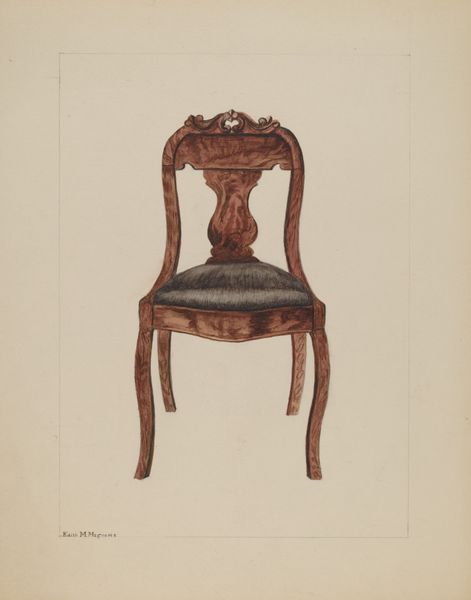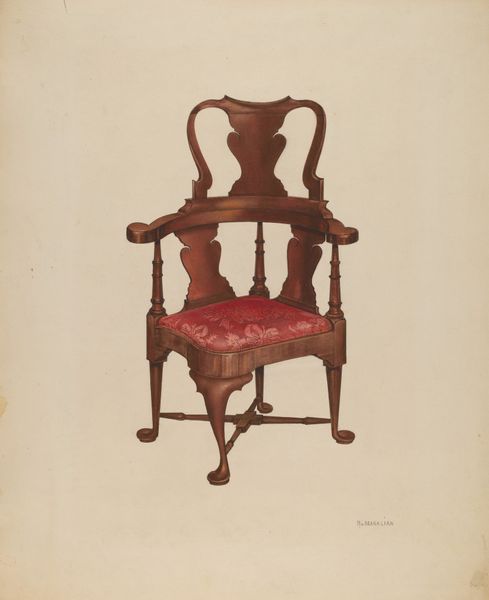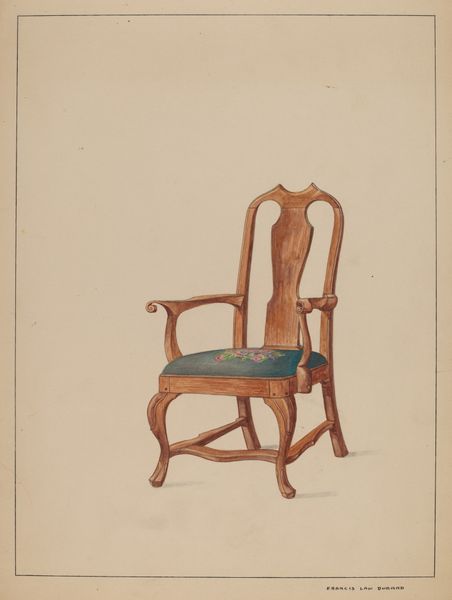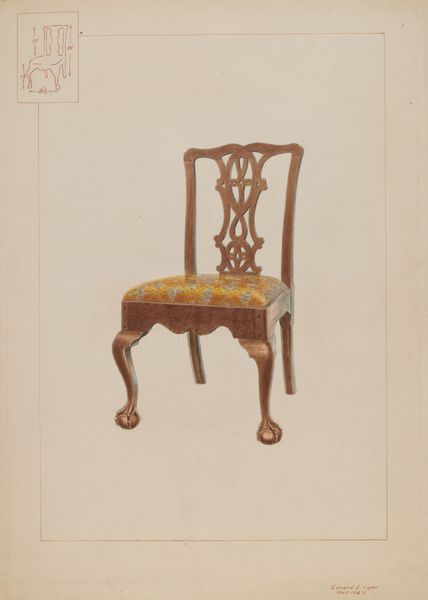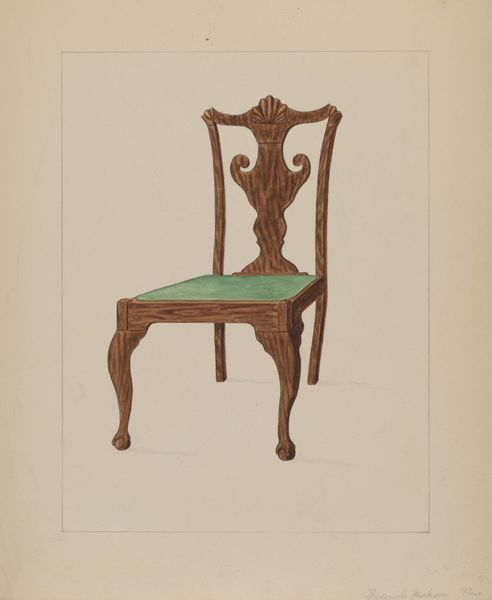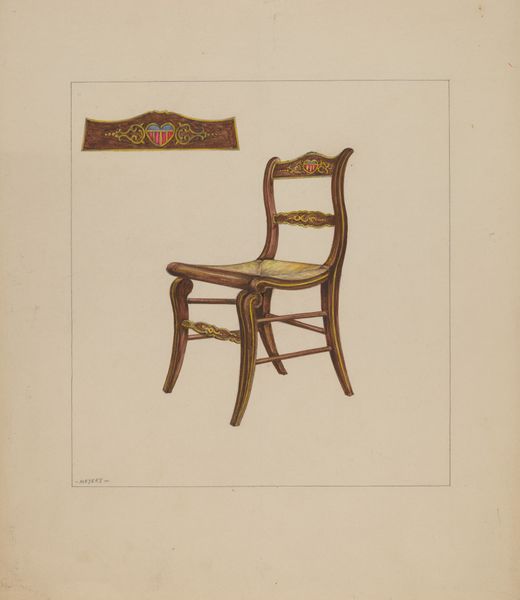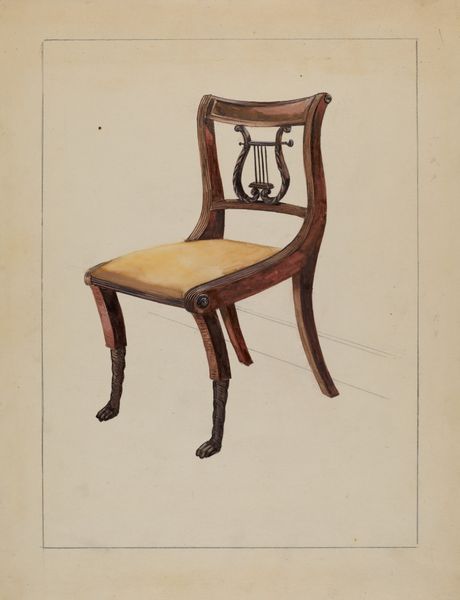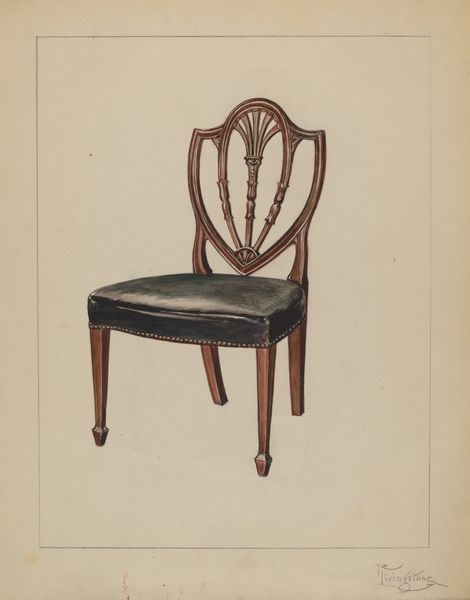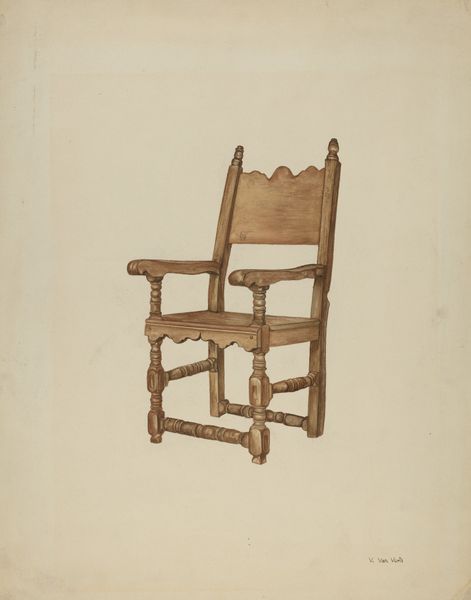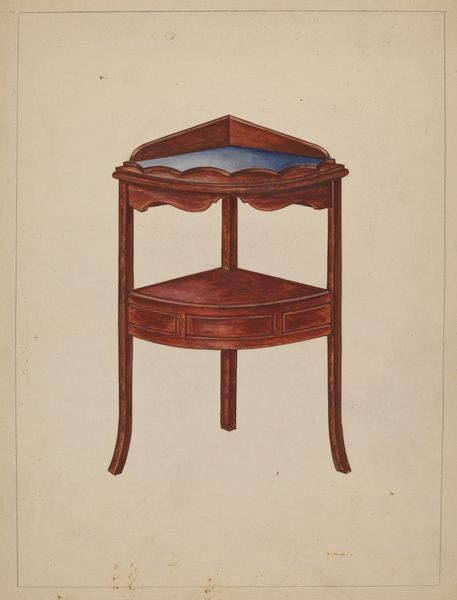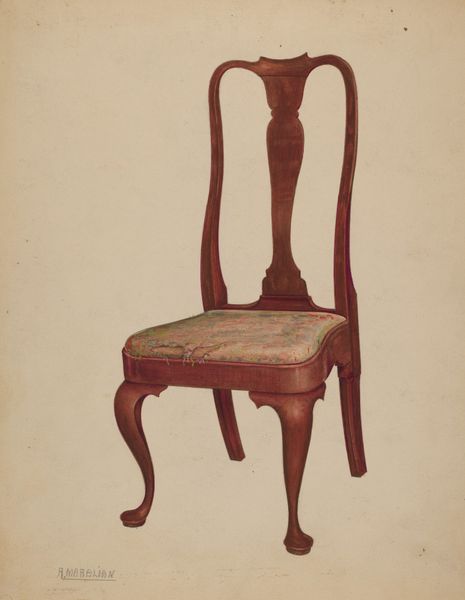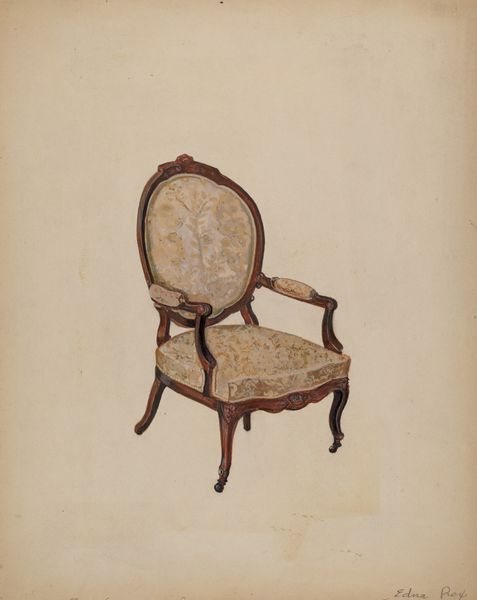
drawing, coloured-pencil, watercolor, pencil
#
drawing
#
coloured-pencil
#
watercolor
#
pencil drawing
#
coloured pencil
#
pencil
#
watercolour illustration
#
academic-art
#
decorative-art
#
watercolor
Dimensions: overall: 28.9 x 23.3 cm (11 3/8 x 9 3/16 in.) Original IAD Object: 30 3/4" x 27 1/2" x 24 1/2.
Copyright: National Gallery of Art: CC0 1.0
Editor: So, here we have Lorenz Rothkranz's "Corner Chair," a pencil and watercolor piece from 1936. I find the level of detail in this rendering quite impressive, especially given it's “just” a chair. What are your initial thoughts, given its place and time? Curator: It’s tempting to simply appreciate the aesthetic appeal and skill, but looking through a historical lens, one has to wonder, why this chair, and why now? In 1936, decorative arts were at a strange crossroads. Modernism was challenging traditional craftsmanship. Does this image reflect nostalgia for pre-war aesthetics, or perhaps represent a longing for stability during times of economic and political upheaval? Editor: That’s a great point, because I was drawn in by the visual presentation, and had not fully considered the state of things in Europe in the 1930's. How might the socio-political landscape shape artistic choices? Curator: Think about it – artistic patronage and consumption are often dictated by the dominant powers. An image like this could signal a retreat to comfortable, established visual languages at a time when radical political and artistic movements were vying for dominance. Perhaps it's an endorsement, however subtle, of a certain class and its values? Editor: So the act of meticulously rendering this chair, seemingly so mundane, could be read as a statement about cultural values or anxieties? Curator: Precisely. It’s about looking beyond the surface and understanding what this image represented to both the artist and potential viewers within that specific cultural and political context. Whose tastes are being catered to here? Who *would* have commissioned such a study? These are important questions. Editor: That gives me a lot to consider about the layers of meaning embedded in what I initially saw as just a beautiful drawing. Thanks for expanding my perspective. Curator: It’s a pleasure. These works constantly remind us to question our first impressions and dig deeper into the contexts that shape art.
Comments
No comments
Be the first to comment and join the conversation on the ultimate creative platform.
